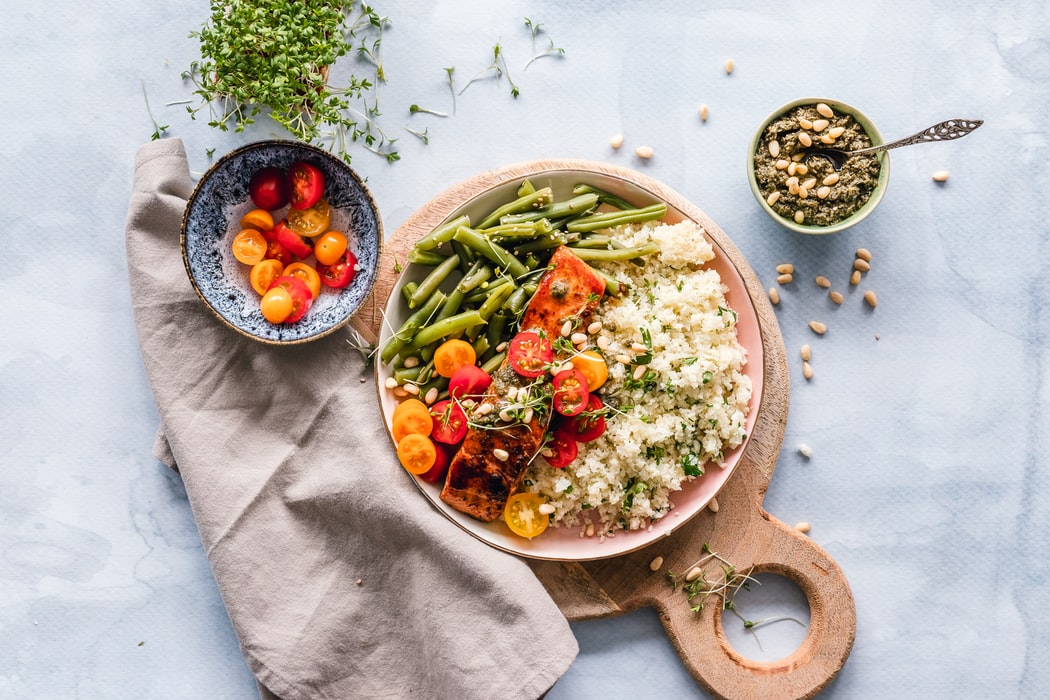
When we think of carbohydrates, most of us will automatically think potatoes, bread, pasta, rice and cereal, Right? However, you can also find carbohydrates in vegetables, fruit, nuts, whole grains and legumes (beans).
The quality of the carbohydrate consumed is typically measured by the Glycemic Index which effectively rates carbohydrates on whether they are Slow Release Carbohydrates or Fast Release Carbohydrates.
You can find Slow-release (or low glycemic index) carbohydrates typically in vegetables, fruit, nuts, whole grains and legumes. These types of foods should make up the bulk of your carbohydrate intake, with an emphasis on the vegetables. They help to control blood sugar, insulin concentrations, energy levels, and body composition. They are also high in soluble and insoluble fibre. Both types of fibre together play important roles, including decreasing serum cholesterol levels, increasing satiety and improving overall gut health.
Fast release (or high glycemic index) carbohydrates are typically found in foods such as store-bought bread, white pasta, cereals, white rice, quick oats etc. They cause elevated blood sugar and blood triglyceride levels, LDL cholesterol, and insulin resistance. These foods should make up only a very small part of your diet and it seems that they are best consumed in a couple of hours following an intense workout involving weights/endurance of 60 minutes or more. As the body is likely carbohydrate depleted at this point, insulin sensitivity is high and muscle and liver glucose uptake are rapid.
Note: this is not the green light to eat a double choc muffin after a workout! It simply means that the body may tolerate and deal with high GI foods much more effectively than when you have been sedentary.
Most carbohydrates are self-explanatory by their description, however, most people get confused around the term “whole-grains”. This has come about through misleading marketing particularly of bread that says “whole grain” on the packet but actually contains mostly white flour, some colours to make it look brown, sugar and preservatives. Whole grains still have their bran, germ and endosperm intact, which is where you can find most of the nutrients and fibres.

Below is a list of popular whole grains to use as a guide when shopping:
Amaranth
It has a lively peppery taste and is roughly 13-14% protein, including two essential amino acids lysine and methionine which are often missing or negligible in most grains.
Barley
It’s usually found as pearled barley which has small amounts of the bran missing. However, it is still an excellent grain that is high in fibre and is great in soups and stews.
Buckwheat
It’s technically not a grain, buckwheat is a cousin of rhubarb and contains high levels of the antioxidant rutin. It improves circulation and prevents LDL cholesterol from blocking blood vessels. Ground-up to flour, it makes lovely gluten-free pancakes.
Millet
Naturally high in protein and antioxidants, this wholegrain can help to control blood sugar and cholesterol. Also great when used as a flour.
Oats
Choose the steel-cut variety which retains the entire oat kernel. The grain has been cut once or twice as opposed to the steamed and flattened rolled oat method. Oats contain a special type of fibre called beta-glucan which is effective in lowering cholesterol. They also contain a unique antioxidant which helps to protect blood vessels from the damage caused by LDL cholesterol.
Quinoa
It’s not technically a grain, quinoa cannot be spoken of highly enough. It contains all the essential amino acids making it a complete protein. 1 cup of cooked quinoa will provide you with 8.1g of protein and a wide range of vitamins, mineral and anti-oxidants.
Brown Rice
It’s rich in manganese, selenium, phosphorus, magnesium, vitamins B1, B3 and iron. Most of these nutrients are removed when brown rice is milled and polished to make white rice. Wholegrain rice is also available in black, red and purple varieties.
Spelt
You can use this grain, although not gluten-free, in place of regular whole wheat in most recipes. It is higher in protein than wheat, and some people who are sensitive to wheat can tolerate spelt.
Tip
Choose vegetables, fruit, nuts, whole grains and legumes for the majority of your carbohydrate intake with an emphasis on the vegetables. Eat only small amounts of fast release carbohydrates, preferably following an intense workout of 60 minutes or more.



